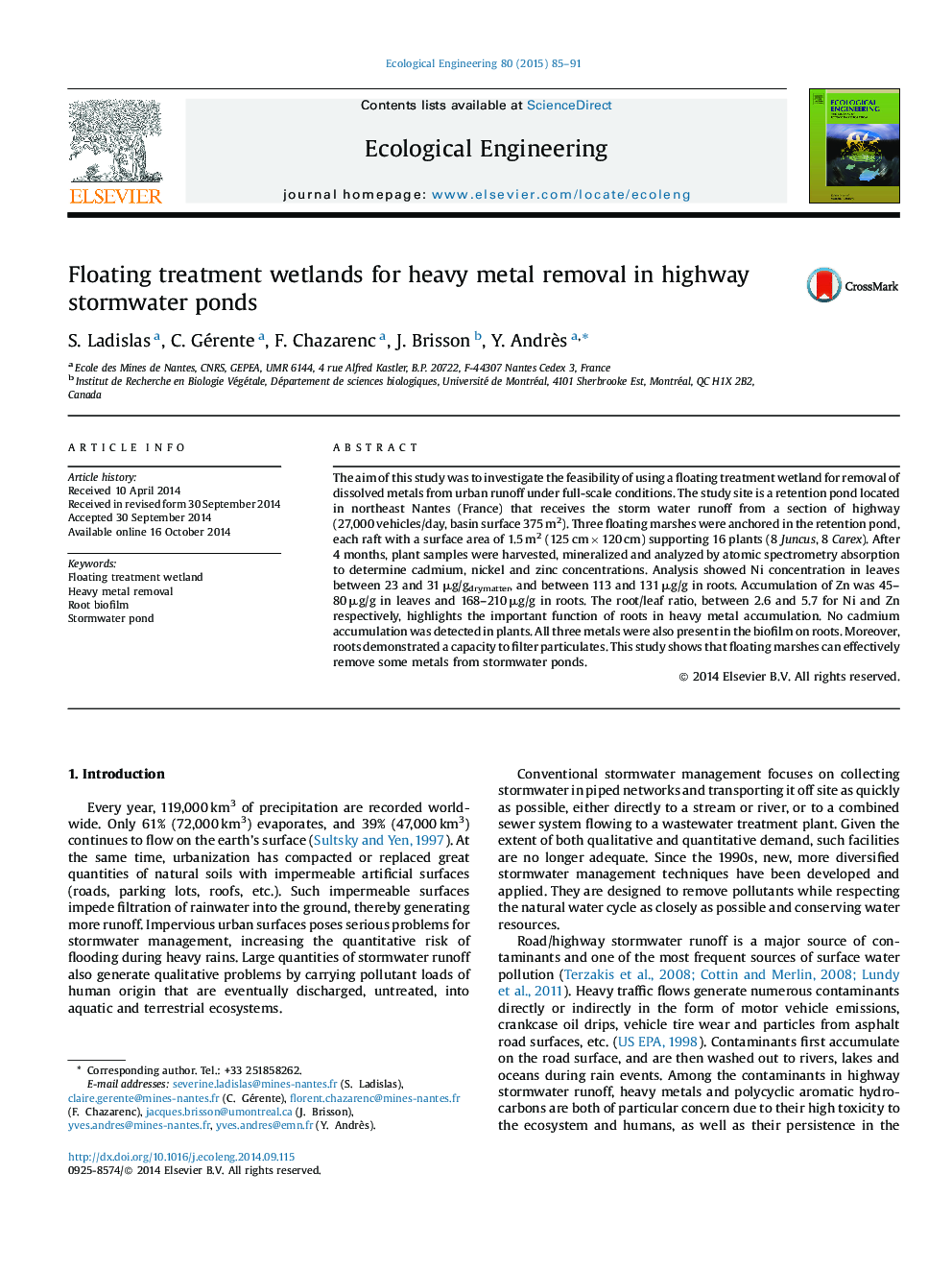| Article ID | Journal | Published Year | Pages | File Type |
|---|---|---|---|---|
| 4389033 | Ecological Engineering | 2015 | 7 Pages |
•Floating treatment wetlands can remove metals from stormwater ponds.•Zn and Ni accumuled in roots of Juncus effusus and Carex riparia.•Metals were present in the root biofilm, probably due to microbial respiration activity.•Effect of roots on particles retention.
The aim of this study was to investigate the feasibility of using a floating treatment wetland for removal of dissolved metals from urban runoff under full-scale conditions. The study site is a retention pond located in northeast Nantes (France) that receives the storm water runoff from a section of highway (27,000 vehicles/day, basin surface 375 m2). Three floating marshes were anchored in the retention pond, each raft with a surface area of 1.5 m2 (125 cm × 120 cm) supporting 16 plants (8 Juncus, 8 Carex). After 4 months, plant samples were harvested, mineralized and analyzed by atomic spectrometry absorption to determine cadmium, nickel and zinc concentrations. Analysis showed Ni concentration in leaves between 23 and 31 μg/gdrymatter, and between 113 and 131 μg/g in roots. Accumulation of Zn was 45–80 μg/g in leaves and 168–210 μg/g in roots. The root/leaf ratio, between 2.6 and 5.7 for Ni and Zn respectively, highlights the important function of roots in heavy metal accumulation. No cadmium accumulation was detected in plants. All three metals were also present in the biofilm on roots. Moreover, roots demonstrated a capacity to filter particulates. This study shows that floating marshes can effectively remove some metals from stormwater ponds.
Graphical abstractFigure optionsDownload full-size imageDownload as PowerPoint slide
